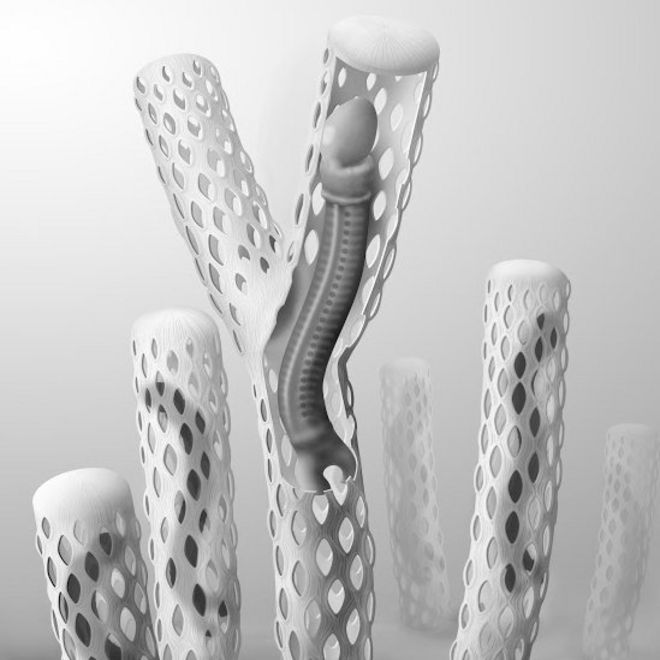 Fossils of a sea worm that lived on the ocean floor about 500 million years ago are giving new insights into how early creatures evolved.
Fossils of a sea worm that lived on the ocean floor about 500 million years ago are giving new insights into how early creatures evolved.
Tube-like structures once thought to be a type of seaweed were made by a worm that lived a solitary life on the sea bed, say scientists.
The research, published in the journal BMC Biology, suggests the animal, Oesia, was a filter feeder.
Fossil discoveries of this kind are rare.
The research was carried out by academics from the universities of Cambridge, Toronto and Montréal, and at the Royal Ontario Museum in Toronto.
Prof Simon Conway Morris, from St John's College, University of Cambridge and a co-researcher on the study, said: "Oesia fossils are pretty enigmatic - they are very rare and until now we could not prove which group they belonged to.
"Now we know that they were primitive hemichordates - perhaps the most primitive of all."
Common ancestor
Hemichordates are a group of creatures that belong to a larger group called deuterostomes, of which vertebrates (including humans) form a separate branch.
Karma Nanglu, from the University of Toronto, and the study's lead researcher, said: "Hemichordates are central to our understanding of how deuterostomes evolved.
"Through them, we can get clues about the anatomy and lifestyle of the last common ancestor that we all share, and this adds further evidence to the hypothesis that the ancestor was a filter-feeder like Oesia."
The specimens, found near Marble Canyon in the Canadian Rockies, are well preserved, giving details of the animal's internal anatomy.-read more
No comments:
Post a Comment